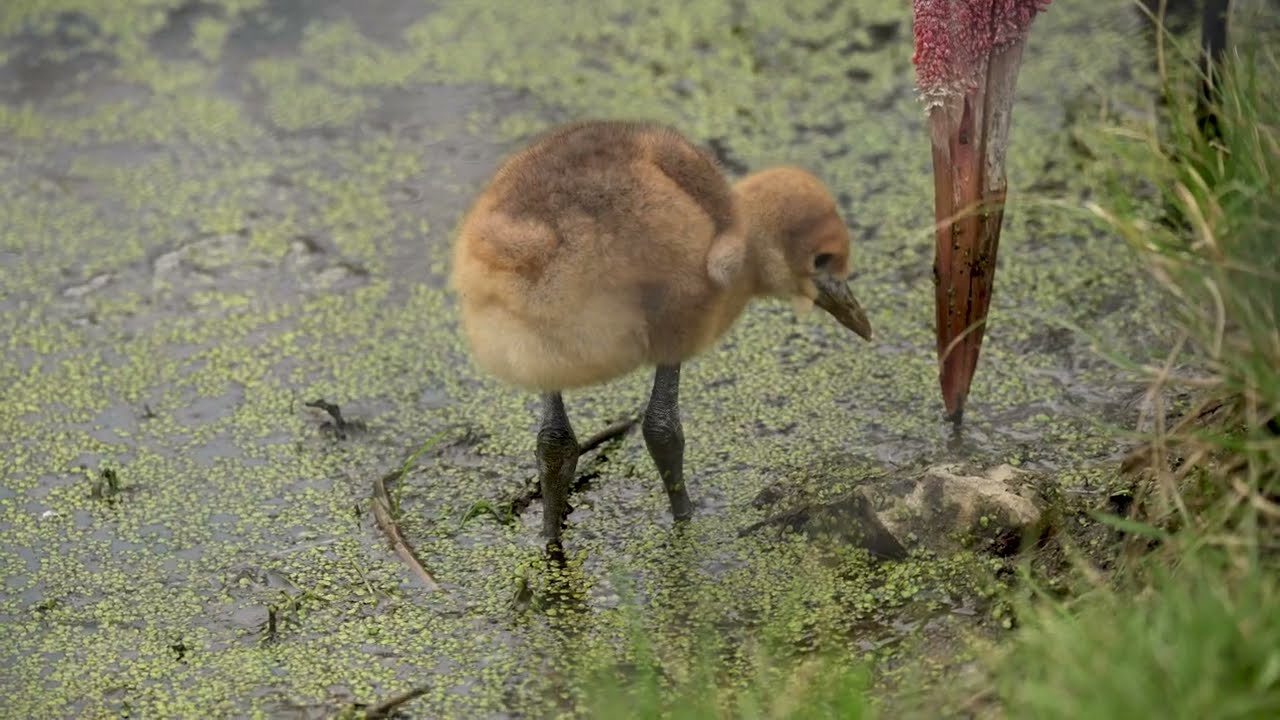– The significance of breeding endangered species like the wattled crane in captivity to support conservation efforts.
– An overview of the wattled crane, including its habitat, behavior, and status in the wild.
– Details of FPZ’s successful breeding program and its impact on wattled crane conservation.
– The role of zoo management in ensuring the health and welfare of captive animals, with a focus on endangered species.
– Innovative conservation strategies such as habitat restoration and community engagement to support species’ survival like the wattled crane.
Breeding endangered species in captivity is a critical component of wildlife conservation, serving as a lifeline for populations dwindling in the wild. The recent success of FPZ (Fictitious Preservation Zoo) in welcoming a wattled crane chick marks a significant milestone in conservation efforts for this species. This event highlights the crucial role that zoos and conservation centers play in the survival of endangered species, acting as arcs of hope in the turbulent waters of extinction pressures.
The wattled crane is a large bird, distinguished by its striking appearance, including a long neck, grey feathers, and a conspicuous wattle. Native to Africa, these birds prefer wetland habitats where they feed on aquatic plants, insects, and small fish. However, their existence is threatened by habitat degradation, poaching, and the impacts of climate change. Classified as vulnerable, the wattled crane faces a high risk of extinction in the wild.
FPZ’s successful breeding of a wattled crane chick is not just a victory for the zoo but a beacon of hope for conservationists worldwide. This achievement resulted from rigorous planning, specialized care, and a deep understanding of the bird’s biological and ecological needs. By simulating the natural habitat as closely as possible and providing a nutrient-rich diet, the zoologists and veterinary staff at FPZ ensured the health and well-being of both the parents and the chick.
The role of zoo management in this process cannot be overstated. Their responsibilities encompass not only the physical care of the animals but also the implementation of breeding programs that contribute to the genetic diversity and sustainability of the species. This involves a meticulous approach to animal welfare, enrichment activities to stimulate natural behaviors, and medical care to prevent and treat health issues.
In addition to captive breeding, innovative conservation strategies like the wattled crane are vital for species’ long-term survival. Habitat restoration projects aim to replenish and protect the wetlands these cranes depend on for nesting and feeding. Moreover, engaging local communities in conservation efforts fosters a sense of stewardship and helps mitigate human-wildlife conflicts. Education programs are also essential, increasing public awareness of endangered species’ challenges and mobilizing support for their protection.
The story of the wattled crane chick at FPZ is more than a success story of breeding an endangered species in captivity. It is a testament to the dedication of conservationists and zoo professionals who work tirelessly to protect our planet’s biodiversity. Through expert management, innovative conservation tactics, and public engagement, there is hope for recovering endangered species like the wattled crane.
As conservationists and wildlife enthusiasts celebrate this achievement, it serves as a reminder of the challenges ahead. The fight to save endangered species is a complex and ongoing battle, requiring cooperation, commitment, and creative solutions. The birth of the wattled crane chick at FPZ exemplifies the potential of captive breeding programs to bolster populations of endangered species. Still, it also underscores the need for broader conservation strategies to address the root causes of their decline.
Ultimately, the success of conservation efforts hinges on our ability to balance human needs with preserving the natural world. The public plays a crucial role in this endeavor by supporting zoos and conservation organizations like FPZ. Together, we can strive for a future where the sight of a wattled crane chick flourishing in the wild and in captivity is a symbol of hope and a testament to our collective efforts to safeguard the natural heritage for generations to come.
*****
Source Description
A fluffy, brown wattled crane chick is toddling after its parents in their outdoor habitat at Franklin Park Zoo. The chick hatched on April 10 as both guests and staff quietly looked on in awe. The hatchling appears healthy and strong, weighing 27g at its routine check-up on April 18. Parents Hansel and Zoolander are dutifully taking turns doting on their new chick, demonstrating how to forage and providing a warm spot to rest under their protective wings.
Full story: https://www.zoonewengland.org/zoo-news/2024/april/baby-animals-abound-at-franklin-park-zoo/
Follow us:
http://Facebook.com/StoneZoo
http://Facebook.com/FranklinParkZoo
Tweets by zoonewengland
http://Instagram.com/zoonewengland
@franklinparkzoo


